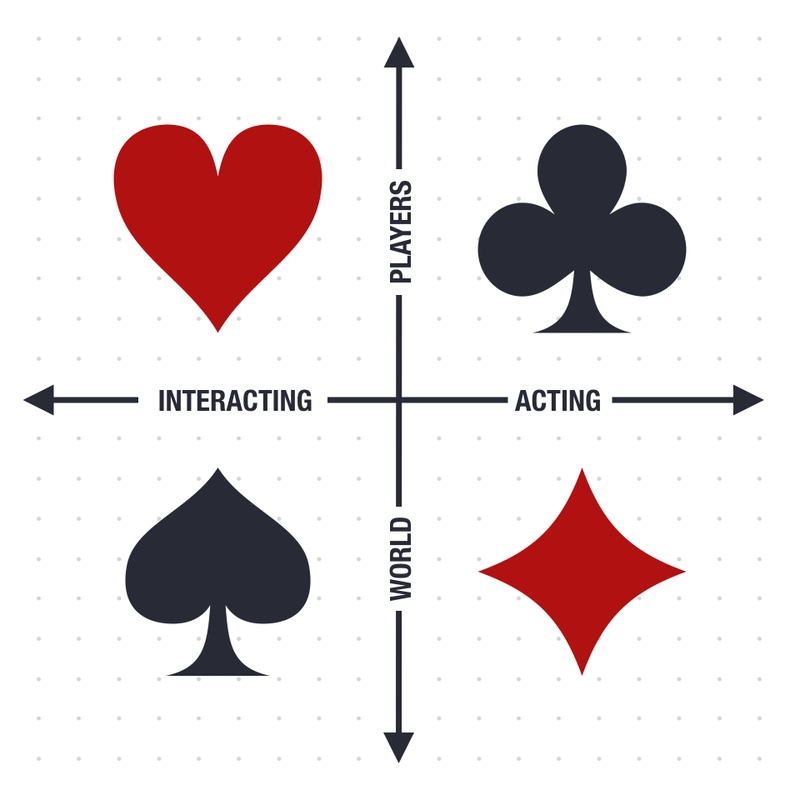Richard Bartle’s Four Player Types is probably one most simplistic gamer psychology that works.
His approach arises from the inter-relationship of two-dimension of playing style: acting versus interacting, and world-oriented versus player-oriented, generating four different kings of playstyle interests. Each of which is presented with a descriptive name:
- Killers - acting-on players. They interfere with the functioning of the game world or the play experience of other players;
- Achievers - acting-on world. These players accumulate status tokens by beating the rules-based challenges of the game world;
- Explorers - interacting with the world. They tend to discover the systems governing the operation of the game world;
- Socializers - interacting with players. Form relationships with other players by telling stories within the game world.
Frankly, these types are associated with French-suited cards (a.k.a. the regular playing cards), where:
- Killers ⮕ Clubs - they hit people with them;
- Achievers ⮕ Diamonds - they’re always seeking treasure;
- Explorers ⮕ Spades -they dig around for information;
- Socializers ⮕ Hearts - they empathize with players.
You can find Richard Bartles official report here: “HEARTS, CLUBS, DIAMONDS, SPADES: PLAYERS WHO SUIT MUDS”
These kinds of playstyle traits help you learn why some people like “Counter-Strike” (Killers, Achievers) and others “Animal Crossing: New Horizons” (Explorers, Socializers). And mostly how they are interacting with the game elements. Both games have a chat function: in Counter-Strike it serves as tactical information and personal humiliation channel, but in Animal Crossing: New Horizons it’s used for being a hospitable island host.
Let’s say you have a task to improve the in-game cross-player interaction elements. You wouldn’t put the “Revenge Now” button in Animal Crossing: New Horizons next to the island guests profile. Or the “Send resources as a present to all guests” option in the “Counter-Strike” game by giving your opponent the upper hand in the upcoming deathmatch.
“My two cents”
- You cannot satisfy all player types in one game unless you are building MMO (World of Warcraft accommodates all four Bartle player types).
- Players don’t sit on one exclusive box (100%), meaning a single player is classified more like in a radial chart style (for example, Killer: 46%, Achiever: 24%, Explorer: 20%, Socializer: 10%)
- Use player types profiles for your acquisition campaigns by addressing their interests. So you won’t bring killers to a single-player flower watering game.

